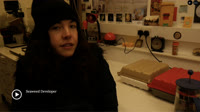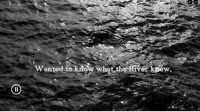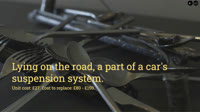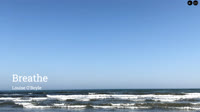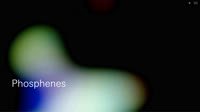Mural Artist Commissions
The latest version of Mural has been made possible as part of a project called “Web monetization and the arts,” which has been generously supported by Grant for the Web.
With the latest version of Mural, we also wanted to work with artists whose work and ideas would help raise our aspirations and understanding of sustainable creative practice. This included the use of environmentally friendly materials but it also involved gaining a better understanding of the environmental impact of emerging technologies.
We are immensely proud to have worked with artists Melanie King, Louise O'Boyle, Olga Suchanova, Ronan Devlin and Colin Frank. They have made a series of fascinating and moving works that also include the use of web monetization.
Submerged Landscapes
Melanie King
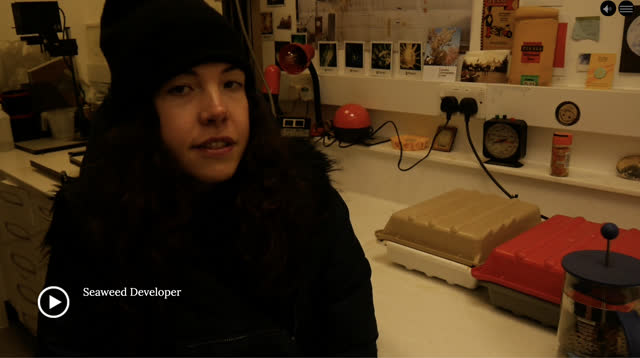
Melanie is interested in the relationship between the environment, photography and materiality. The purpose of her work is to demonstrate the intimate connection between celestial objects (sun, moon, stars), photographic material and the natural world. Melanie is currently researching a number of sustainable photographic processes, to minimise the environmental impact of her artistic practice, informed by the Sustainable Darkroom movement.
About the Mural artist commissions
From its inception Mural has been developed in close collaboration with a growing cohort of talented artists from across the world. These collaborations have been a way for us to innovate, experiment and learn while working with visually rich subject matter and diverse narratives.
We believe that by working with artists, we can continue to develop Mural as a tool that can be used by anyone as a means of creative expression and the sharing of complex ideas and stories online.
Each commission is available for you to view below. You can see most of each artwork for free, but you can also support the artist and see additional material if you have a Coil wallet. If you would like to set up a Coil wallet to see the full pieces, go here and follow the instructions.
Our heartfelt thanks go to the artists and development team who worked together on this project. And a huge thank you goes to Grant for the Web, who made this version of Mural and these commissions possible through their generous support.
Mural 2 will be formally released on Monday, Jan. 3, 2022.
Web monetization and the arts
During the development of Mural 2 - with support from Grant for the Web - there has been an exponential growth in the use of alternative currencies. At the same time, there has been great interest in proving your ownership of digital artworks through NFTs (Non Fungible Tokens).
For all these reasons, it feels very important to us to have introduced a way of financially supporting artistic content online. This was done as part of a project called “Web monetization in the arts,” which was generously funded by Grant for the Web.
An important part of the project involved building in support for web monetization in Mural 2, which we then used when working with a group of artists on specially-commissioned artworks.
Web monetization streams micropayments directly from web users to content creators. You can find out more about web monetization and the Interledger protocol that underpins it.
Two things have to happen in order for the web monetization to work. On the user side, people sign up for a service that supports web monetization - currently that's Coil. Coil users pay $5 USD per month into their Coil wallet - which is stored securely in a plugin on their browser - which is paid directly to the creators in the form of a cryptocurrency called XRP.
On the creator side, artists set up an account which supports the Interledger protocol - think of it like a bank account number. Then, when a Coil user visits a web monetization-enabled page, the payments are automatically streamed to the creator. The rate is approximately USD $0.34 per hour - enough to make it affordable for users.
A key point for our involvement with Coil is their use of a cryptocurrency called XRP. As opposed to currencies like Bitcoin and Ethereum, Coil uses XRP, which uses a system called 'proof of stake' for preparing its blockchain. This is a system that has considerably better environmental implications than Ethereum - the main blockchain used when creating NFTs - because it uses far less computing resources.
We're grateful to Grant for the Web and its community for their support during the “Web monetization and the arts” project.
